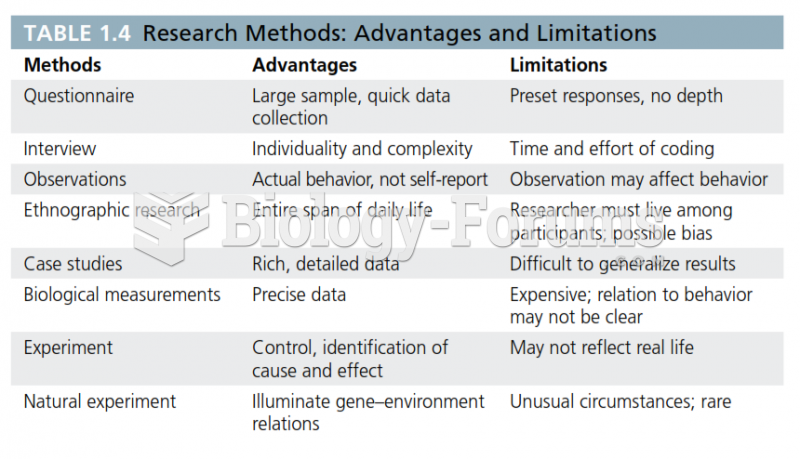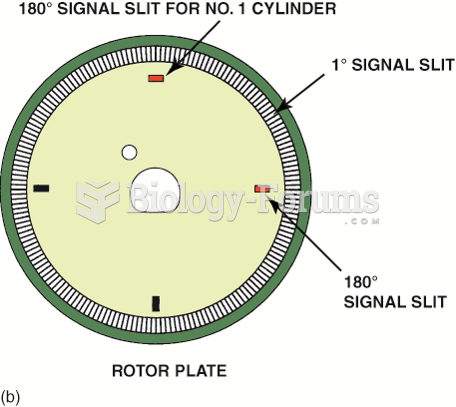|
|
|
Cytomegalovirus affects nearly the same amount of newborns every year as Down syndrome.
Egg cells are about the size of a grain of sand. They are formed inside of a female's ovaries before she is even born.
In 2012, nearly 24 milliion Americans, aged 12 and older, had abused an illicit drug, according to the National Institute on Drug Abuse (NIDA).
Signs and symptoms that may signify an eye tumor include general blurred vision, bulging eye(s), double vision, a sensation of a foreign body in the eye(s), iris defects, limited ability to move the eyelid(s), limited ability to move the eye(s), pain or discomfort in or around the eyes or eyelids, red or pink eyes, white or cloud spots on the eye(s), colored spots on the eyelid(s), swelling around the eyes, swollen eyelid(s), and general vision loss.
Sperm cells are so tiny that 400 to 500 million (400,000,000–500,000,000) of them fit onto 1 tsp.
 The world attempted to deal with Somalia as if it were a real country but painfully learned that Som
The world attempted to deal with Somalia as if it were a real country but painfully learned that Som
 Ronald Reagan rides a horse—a familiar photo opportunity for presidents. But Reagan was an amiable ...
Ronald Reagan rides a horse—a familiar photo opportunity for presidents. But Reagan was an amiable ...





